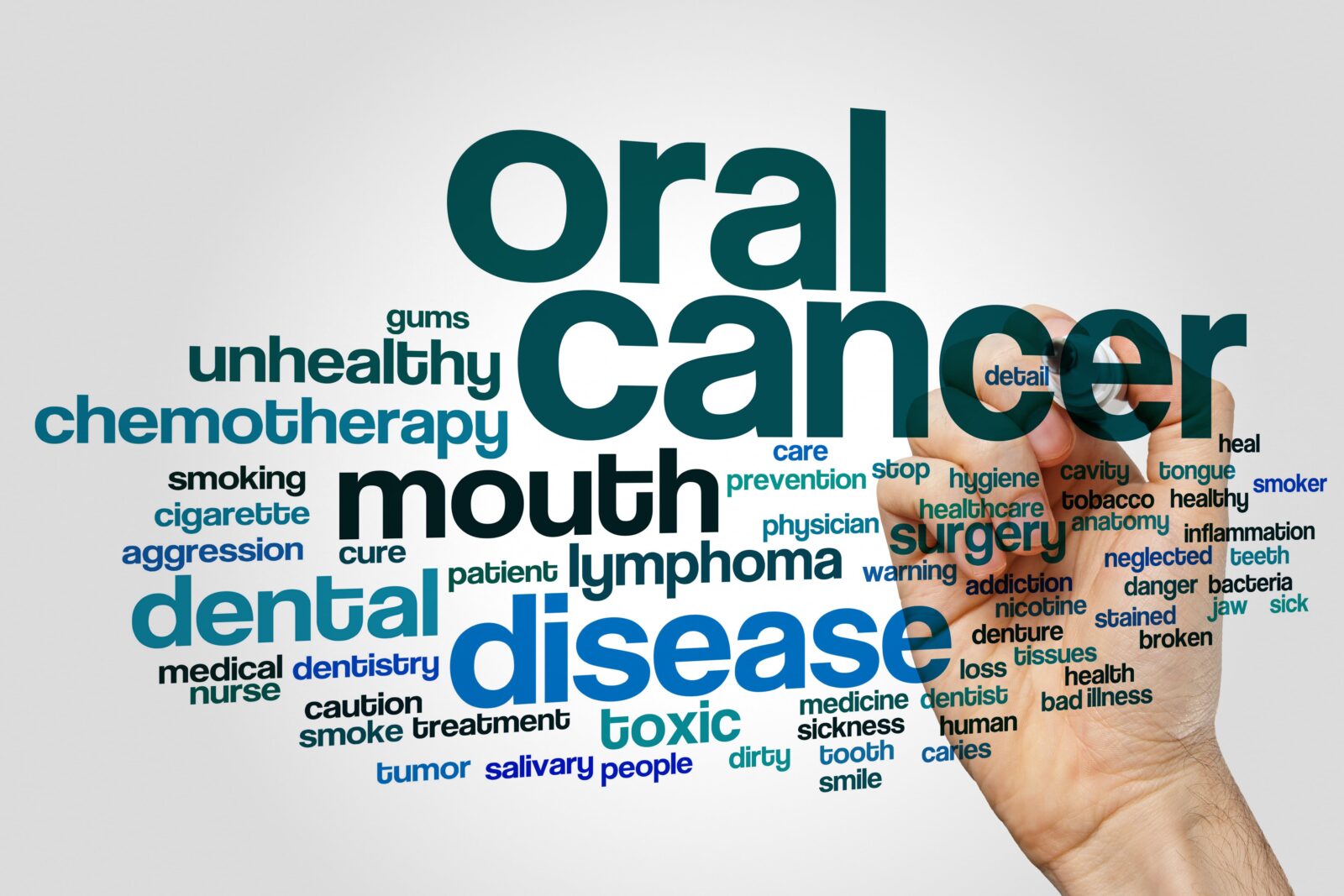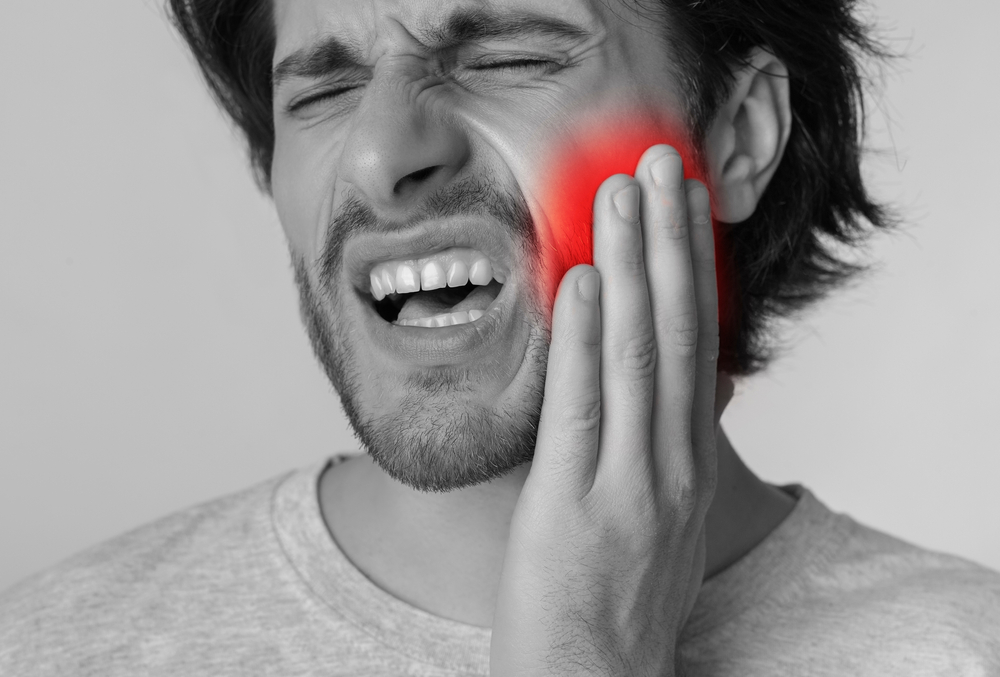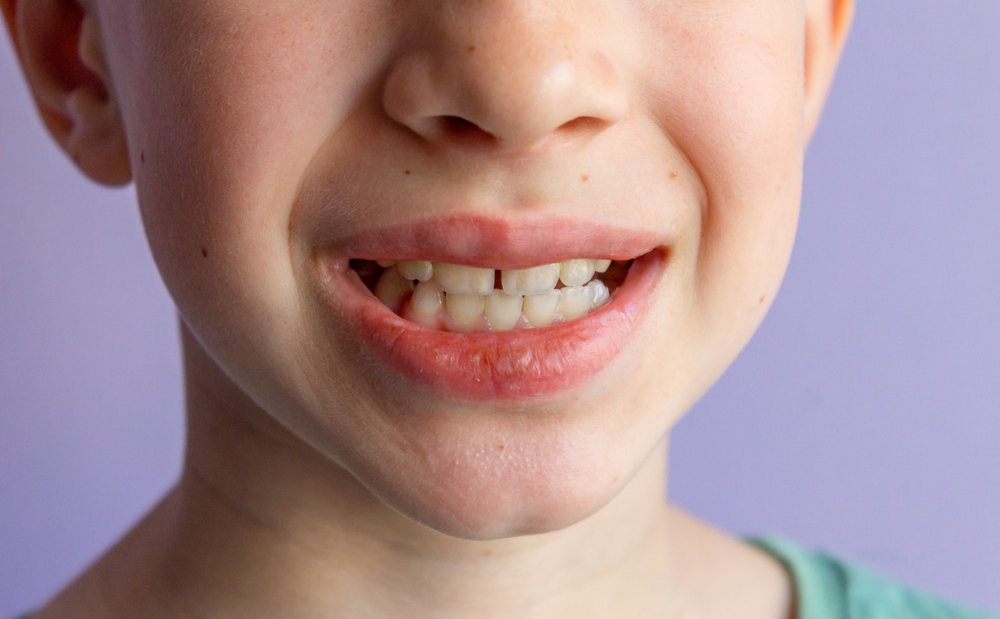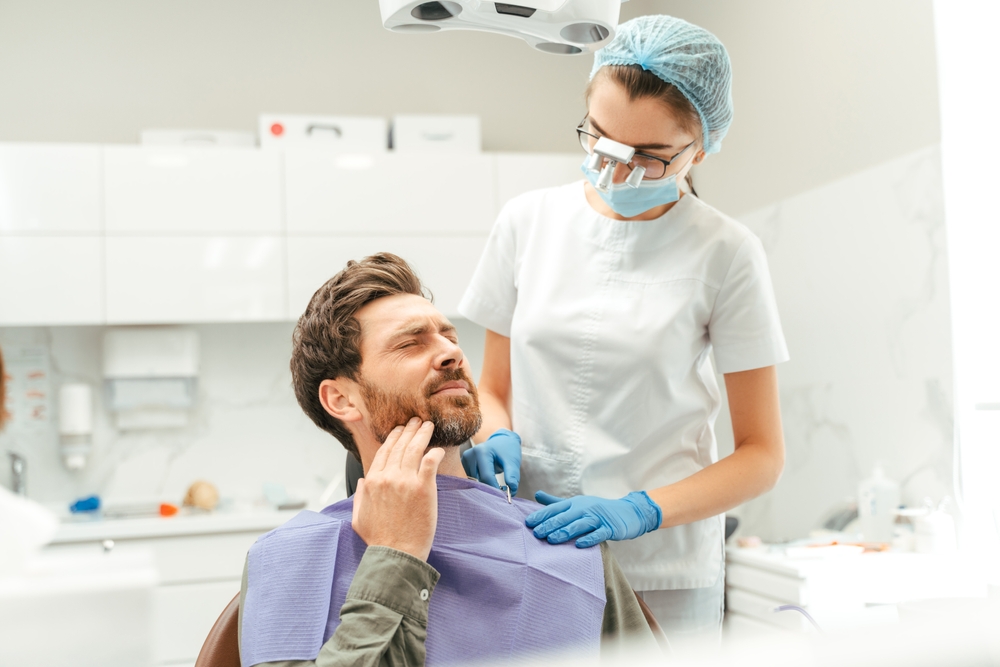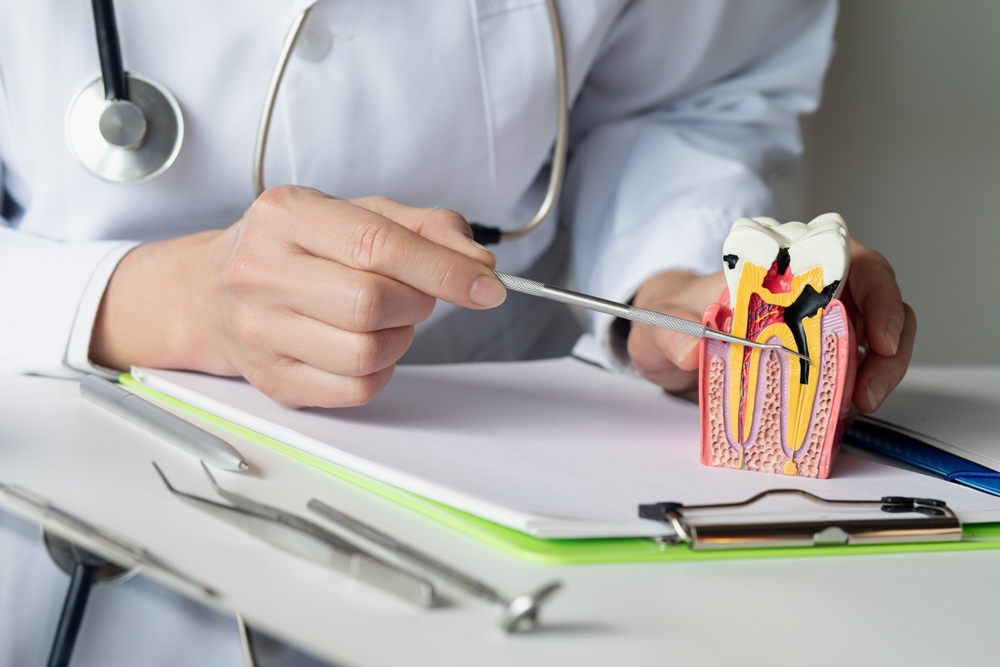Oral cancer, a concerning and often overlooked health issue, poses significant risks to individuals worldwide. As a condition that can silently progress with minimal initial symptoms, it’s crucial for dental patients to arm themselves with knowledge about this disease. Understanding its signs, risk factors, and preventive measures not only aids in early detection but also underscores the vital role regular dental check-ups play in overall oral health. This guide aims to shed light on oral cancer, offering dental patients essential insights to safeguard their well-being.
What is Oral Cancer?
Oral cancer is a type of cancer that originates in the tissues of the mouth or throat. It belongs to a larger group of cancers called head and neck cancers. Oral cancer can be life-threatening if not diagnosed and treated early.
Structures Affected by Oral Cancer:
- Lips: It can affect both the upper and lower lips, but the lower lip is more commonly affected.
- Tongue: The cancer can develop on the front two-thirds of the tongue (oral tongue) or the base of the tongue, which extends down the throat.
- Gums: The tissue surrounding the teeth can become affected.
- Floor of the Mouth: This is the area beneath the tongue.
- Inner Lining of the Cheeks: This includes the buccal mucosa, the inner side of the cheeks.
- Hard and Soft Palate: The hard palate is the front part of the roof of the mouth, while the soft palate is the back part.
- Oropharynx: This is the part of the throat that is just behind the mouth.
- Tonsils: Lymphoid tissues located in the back of the mouth on either side of the oropharynx.
- Salivary Glands: These are glands that produce saliva and are located throughout the oral cavity.
It’s important to note that while these are the primary structures within the oral cavity that can be affected by oral cancer, the disease can also spread to other parts of the body if not detected and treated in its early stages. Regular dental check-ups and screenings are crucial for early detection and successful treatment.
Signs and Symptoms
Oral cancer can manifest in various ways, and its signs and symptoms can sometimes be mistaken for other, less serious conditions. However, it’s crucial to be aware of the following potential indicators of oral cancer and seek medical attention if they persist for more than two weeks:
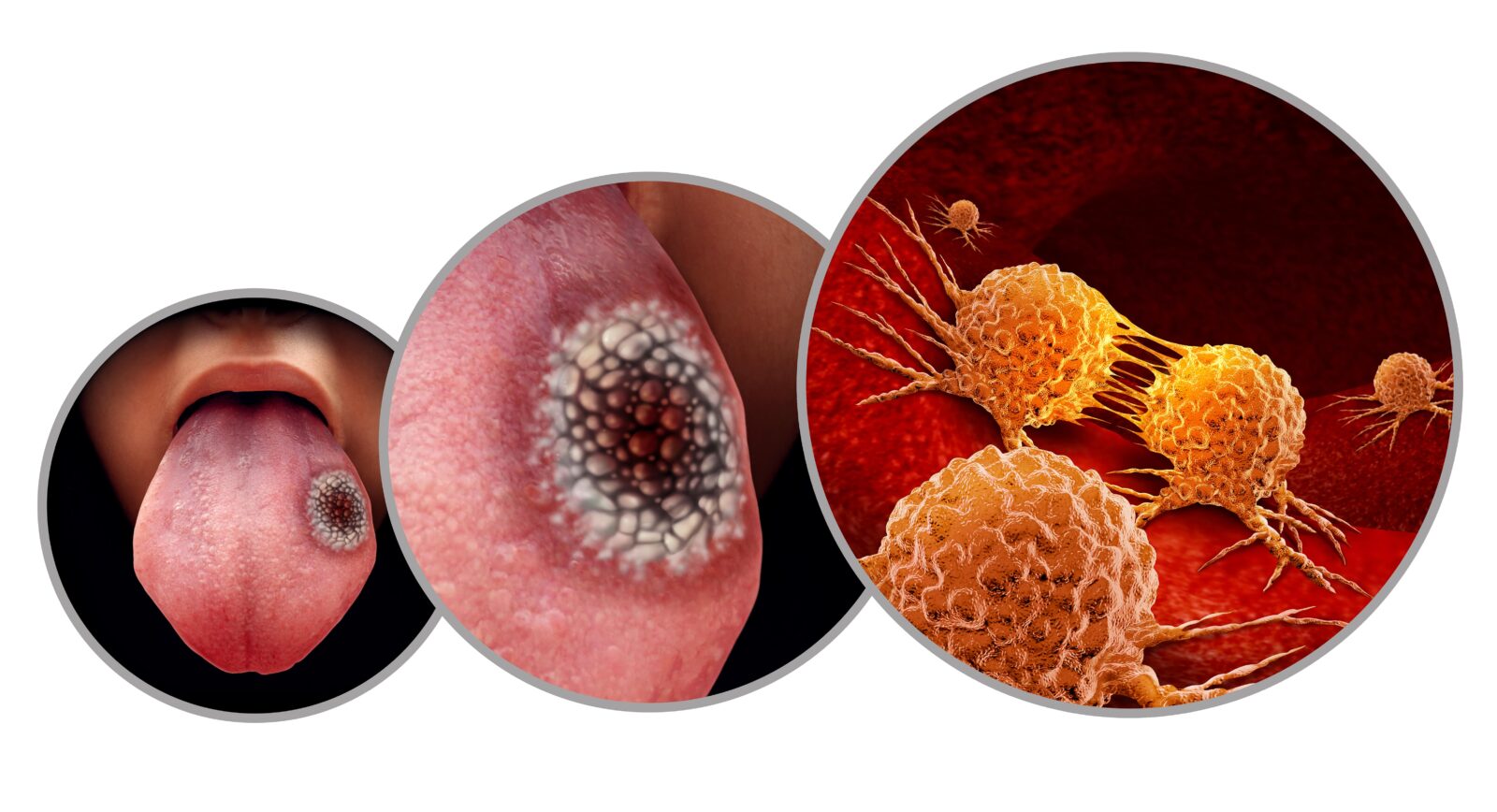
- Sores or Ulcers: Non-healing sores or ulcers in the mouth or on the lips that persist for more than two weeks.
- Red or White Patches: The appearance of white (leukoplakia) or red (erythroplakia) patches inside the mouth, on the gums, tongue, or lining of the mouth.
- Lumps or Thickening: Any lumps, rough spots, crusts, or eroded areas on the lips, gums, or inside the mouth.
- Pain or Tenderness: Unexplained pain or tenderness in the face, mouth, or neck.
- Difficulty Chewing or Swallowing: Experiencing pain or difficulty when chewing, swallowing, or moving the jaw or tongue.
- Swelling: Swelling of the jaw or sudden tooth loss without a clear cause.
- Sore Throat or Persistent Hoarseness: A chronic sore throat or a feeling of something being stuck in the throat.
- Change in Voice: Hoarseness or a change in the voice that doesn’t go away.
- Ear Pain: Persistent pain in or around the ear when swallowing.
- Numbness: Numbness or loss of feeling in any part of the mouth or on the lips.
- Loose Teeth: Teeth becoming loose without an apparent reason, such as trauma.
- Bad Breath: Persistent bad breath or an unpleasant taste in the mouth.
- Weight Loss: Unexplained weight loss.
- Difficulty Wearing Dentures: For those who wear them, a sudden change in the fit of dentures.
It’s essential to remember that many of these symptoms can be caused by conditions other than cancer, such as infections or benign tumors. However, if any of these signs or symptoms persist for more than two weeks, it’s crucial to see a dentist or healthcare professional for an evaluation. Early detection and treatment significantly improve the chances of a successful outcome.
What causes oral cancer?
Oral cancer can be caused by a combination of genetic and environmental factors. Several risk factors can increase the likelihood of developing oral cancer. It’s important to note that having one or more of these risk factors doesn’t necessarily mean someone will get oral cancer, but it does increase their risk. Here are the primary risk factors associated with oral cancer:
- Tobacco Use: This is the most significant risk factor for oral cancer. Whether it’s smoking cigarettes, cigars, pipes, or using smokeless tobacco products like snuff or chewing tobacco, tobacco use greatly increases the risk.
- Alcohol Consumption: Heavy and prolonged alcohol use is another major risk factor. The risk is even higher for those who both smoke and drink heavily.
- Human Papillomavirus (HPV): Infection with certain high-risk types of HPV, especially HPV 16, has been linked to a subset of oral cancers, particularly oropharyngeal cancers.
- Sun Exposure: Excessive and prolonged exposure to the sun’s ultraviolet (UV) rays can increase the risk of lip cancer.
- Diet: A diet deficient in fruits and vegetables may increase the risk of oral cancer.
- Gender: Historically, men have been twice as likely as women to develop oral cancer, though this gap has narrowed. This difference is often attributed to higher rates of alcohol and tobacco use by men, but the gap is closing as more women are using these substances.
- Age: Oral cancer is typically diagnosed in older individuals, with two-thirds of those diagnosed being over the age of 55.
- Previous Oral Cancer: Individuals who have had oral cancer once are at an increased risk of developing another oral cancer.
- Family History: A family history of cancer can increase the risk, though this factor is less significant than others.
- Weakened Immune System: People with weakened immune systems, such as those who have undergone organ transplants, are at a higher risk.
- Lichen Planus: People with a severe case of this disease, which affects the skin and mouth, may have a higher risk.
- Exposure to Certain Chemicals: Regular exposure to certain chemicals, especially in workplaces (like asbestos or synthetic fibers), can increase the risk.
It’s essential to be aware of these risk factors and, where possible, take preventive measures, such as reducing tobacco and alcohol use, practicing safe sun exposure, and maintaining a balanced diet. Regular dental check-ups and screenings can also aid in early detection.
The Importance of Regular Dental Exams in Relation to Oral Cancer
For many, a trip to the dentist might be associated with a routine cleaning or addressing a specific dental issue. However, regular dental exams play a pivotal role in more than just maintaining good oral hygiene; they are a frontline defense against oral cancer. Here’s why every dental patient should prioritize these visits:
Early Detection:
Oral cancer, like many cancers, is most treatable when caught early. Dentists are trained to recognize the early signs of oral cancer, which might be missed or overlooked by patients. By the time symptoms become noticeable or bothersome to a patient, the disease may have progressed.
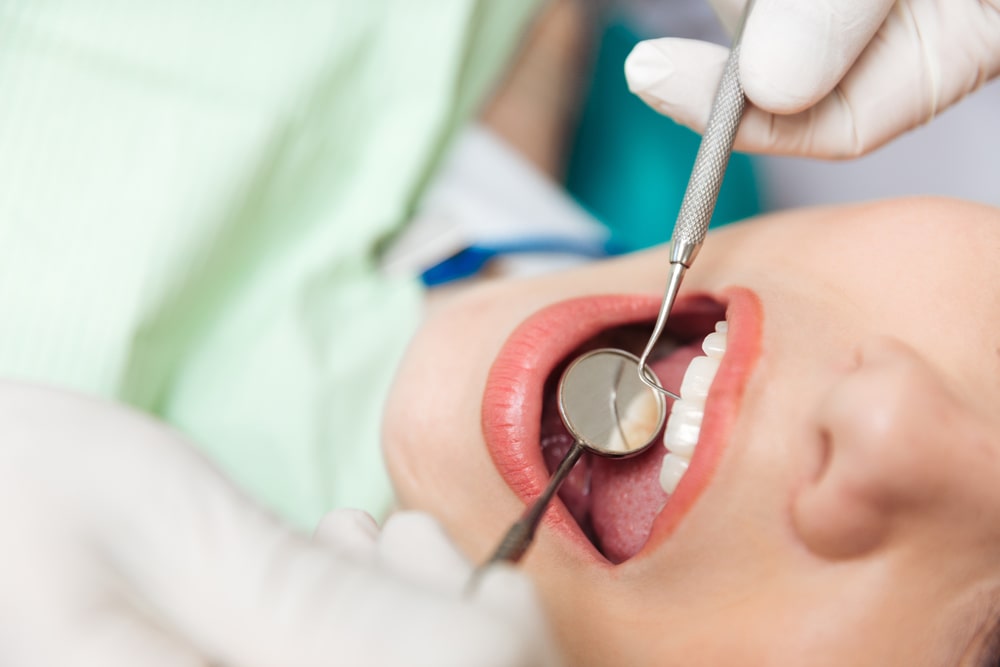
Comprehensive Screening:
During a dental exam, your dentist doesn’t just check for cavities. They examine the entire oral cavity, including areas you might not be able to see or feel yourself. This includes the tongue, roof and floor of the mouth, inside of the cheeks, and the back of the throat.
Risk Assessment:
Regular visits allow your dentist to assess and monitor any risk factors you might have, such as tobacco or alcohol use, and provide guidance on reducing these risks.
Education and Awareness:
Dentists can educate patients about the signs and symptoms of oral cancer, empowering them to be vigilant about any changes they might notice between visits.
Peace of Mind:
Knowing that a trained professional has examined your mouth and found no cause for concern can provide significant peace of mind. On the other hand, if there is a concern, catching it early can make the treatment process more straightforward and increase the chances of a positive outcome.
Holistic Health:
The mouth is a window to the overall health of the body. Conditions like oral cancer can be indicative of other systemic issues. Regular dental exams can, therefore, play a role in maintaining not just oral health but overall well-being.
While the primary goal of dental visits might be to maintain dental health, these regular check-ups serve a dual purpose in the early detection and prevention of oral cancer. Given the potential severity of oral cancer and the high value of early detection, regular dental exams become an essential component of one’s overall health regimen. So, the next time you consider postponing that dental appointment, remember: it’s not just about clean teeth; it’s about safeguarding your health.
In Conclusion
Understanding oral cancer is not just about recognizing its medical implications but about embracing a proactive approach to overall oral health. This condition, often manifesting subtly, can have profound consequences if left undetected. Knowledge of its signs, risk factors, and the invaluable role of regular dental screenings can be the difference between early intervention and advanced complications. By being informed about oral cancer, we hope to equip our patients with the tools to safeguard their health. In relation to oral cancer, we must emphasize that regular dental visits are not just about maintaining a radiant smile, but also about ensuring one’s well-being and longevity.

